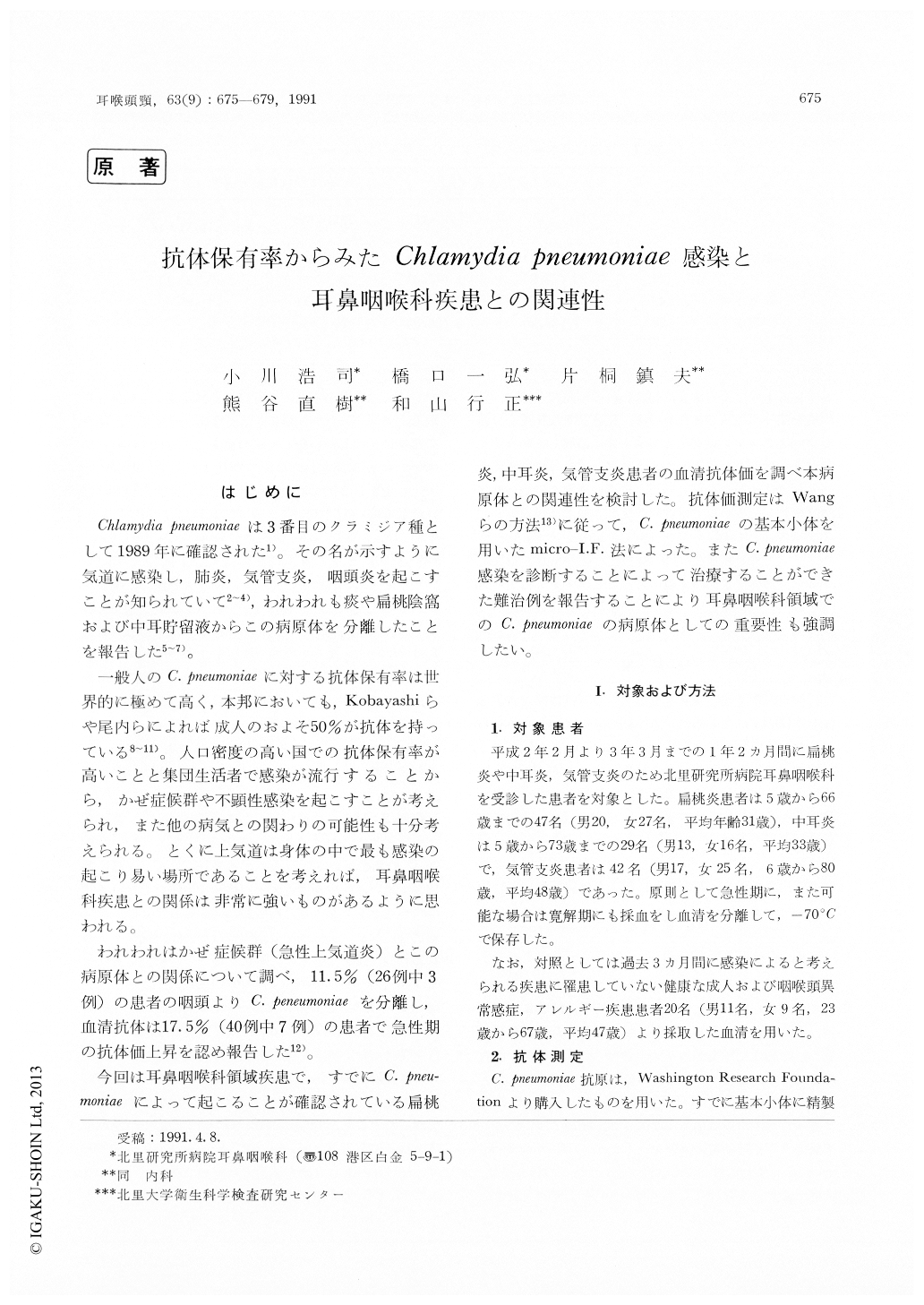Japanese
English
- 有料閲覧
- Abstract 文献概要
- 1ページ目 Look Inside
はじめに
Chlamydia Pneumoniaeは3番目のクラミジア種として1989年に確認された1)。その名が示すように気道に感染し,肺炎,気管支炎,咽頭炎を起こすことが知られていて2〜4),われわれも痰や扁桃陰窩および中耳貯留液からこの病原体を分離したことを報告した5〜7)。
一般人のC.pneumoniaeに対する抗体保有率は世界的に極めて高く,本邦においても,Kobayashiらや尾内らによれば成人のおよそ50%が抗体を持っている8〜11)。人口密度の高い国での抗体保有率が高いことと集団生活者で感染が流行することから,かぜ症候群や不顕性感染を起こすことが考えられ,また他の病気との関わりの可能性も十分考えられる。とくに上気道は身体の中で最も感染の起こり易い場所であることを考えれば,耳鼻咽喉科疾患との関係は非常に強いものがあるように思われる。
Chlamydia pneumoniae was first isolted in 1965 and classified as a new chlamydia strain in 1989. It causes respiratory tract infections. The prevalence of type-specific antibodies to C. pneumoniae in patients with otolaryngeal diseases was studied using a microimmunofluorescence method. Twelve (25.5%) of 47 patients with tonsillitis, 7 (24.1%) of 29 with otitis media and 16 (38.1%) of 42 with bronchitis had antibodies indicating current or recent infection of the organism. The limited data available suggest that C. pneumoniae is an important pathogen of otolaryngeal diseases. This agent has a tendency to cause a chronic disease and relapse unless appropriate antibiotic therapy is performed.

Copyright © 1991, Igaku-Shoin Ltd. All rights reserved.


